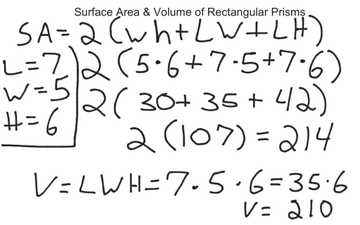

Where A is the area, h is the height, a and b are the lengths of the base trapezoids Why is the Trapezoidal Prism a 3D Figure? Since the prism has two trapezoids, to calculate the volume we need to find the height of one of the trapezoids using this formula: In order to find the height of a trapezoidal prism, we need to find the area of one of the trapezoids. How do you Find the Height of a Trapezoidal Prism? When the trapezoidal prism is flattened, we can see these two images clearly. The net of a trapezoidal prism is that it consists of two trapezoids and four rectangles.

Where h is the height, b and d are the lengths of the base, a + b + c + d is the perimeter, and l is the lateral surface area.

Surface Area of a Trapezoidal Prism = h (b + d) + l (a + b + c + d) The formula to calculate the surface area of a trapezoidal prism is: Where h is the height of trapezoidal, l is the height of the prism, a and b are the lengths of the top and bottom of a trapezoidal prism What is the Formula to Calculate the Surface Area of a Trapezoidal Prism? The formula to calculate the volume of a trapezoidal prism is:Īrea (A) = ½ × h × (a + b) or ½ h(b 1+ b 2) To find the volume of a trapezoidal prism, we need to first find the area of one trapezoid. What is the Formula to Calculate the Volume of a Trapezoidal Prism? In this article, we are going to focus on the square prism definition, types, surface area, and volume formulas, net and examples. It is because the lateral faces of the square prism can be rectangular or square. One of the box noticeable example of a trapezoidal prism that we see in daily life is fire brick. An interesting fact is, all the cubes are square prisms, but not all the square prisms are cubes. A trapezoidal prism was given its name since it is made up of trapezoids. A trapezoidal prism has six faces, eight vertices, and 12 edges. FAQs on Trapezoidal Prism What is a Trapezoidal Prism?Ī trapezoidal prism is a 3D shape with two trapezoids as its base that is being joined by four rectangles.


 0 kommentar(er)
0 kommentar(er)
